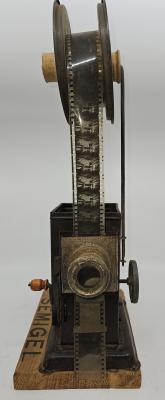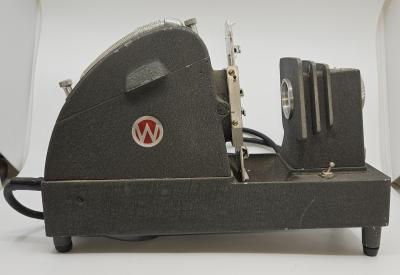Minimum Maximum Thermometer
1850 - 1870The thermometer is comprised of painted tin case which has an inner slot either side to secure a porcelain Fahrenheit scale plate. The case has a hinged lid that can be opened to remove the porcelain plate. The COLD (minimum) scale reads from -10 to 120 degrees and the HEAT (maximum) from -10 to 120. The 32 degree mark on each side has the word FREEZE next to it. On the porcelain scale plate there is a glass tube that starts with a sealed glass bulb above the HEAT side, goes down to a U bend up to the COLD and then another U bend to its central end point which is another sealed glass bulb. The glass tube is attached to the porcelain plate by metal fittings at both end points and the top and bottom U points. Both ends of the tube hold a yellow fluid which is probably alcohol which expands and contracts depending on the external temperature and forces the mercury to move.
The earliest documented use of mercury in a thermometer stretches as far back to perhaps the 1620s when the Jesuit scholar, Athanasius Kircher, used quicksilver for his air thermometer, the precursor to in-glass thermometers. Later, in the 1650s, failed experiments were run to determine if mercury might be a superior substitute for spirits in an enclosed glass thermometer. In 1659, the astronomer Ismael Boulliau abandoned using mercury when he determined that it was not as responsive to changes in temperature as spirits.
The mercury thermometer was invented by Dutch physicist Daniel Gabriel Fahrenheit in 1714. It consists of a narrow glass tube with a bulb at the bottom, containing mercury. The volume of mercury changes with temperature; mercury is driven out of the bulb and up the tube as the temperature rises.
Details
Details
The maximum and minimum thermometer is a thermometer that can record the maximum and minimum temperatures reached over a period of time, for example 24 hours. It is used to record the extremes of temperature at a location, for instance at sea. It was invented by the British scientist James Six, in 1780 and the same basic design remains in use today.
Other items from Busselton Historical Society
Scan this QR code to open this page on your phone ->




